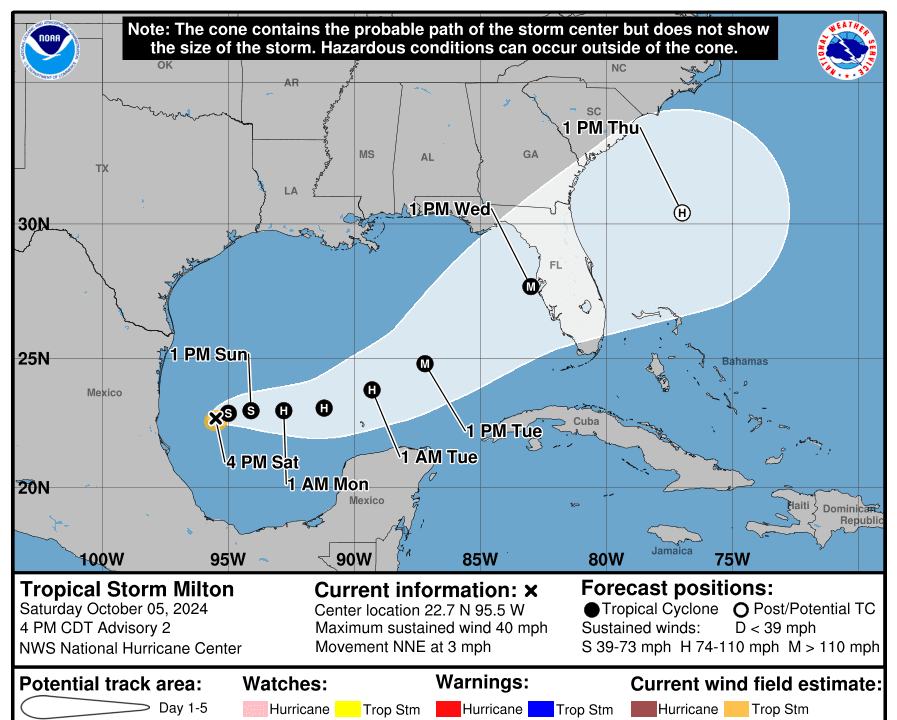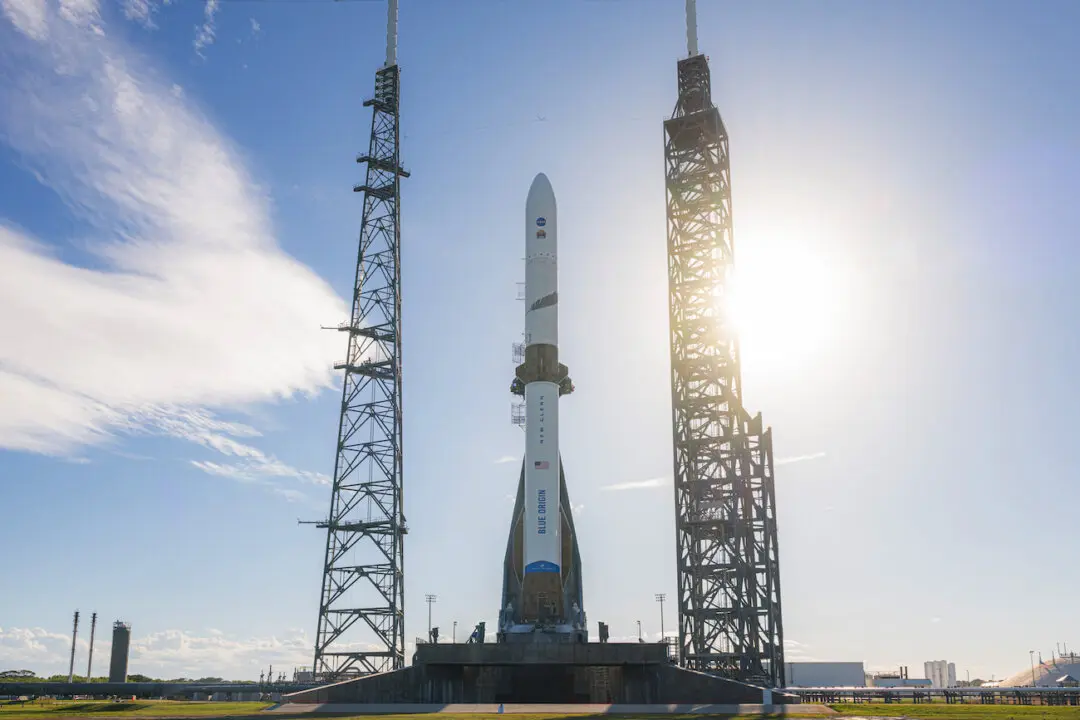TAMPA—Tropical Storm Milton is now expected to become a major hurricane before it makes landfall on Florida’s west coast, according to the National Hurricane Center.
As of 5 p.m. ET on Oct 5, Milton is expected to bring “life-threatening impacts” to Florida’s Gulf Coast, achieving maximum sustained winds of 115 mph, making it a Category 3 hurricane.





